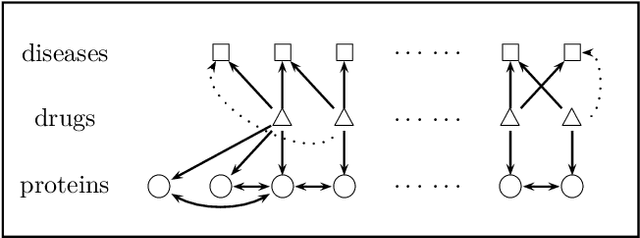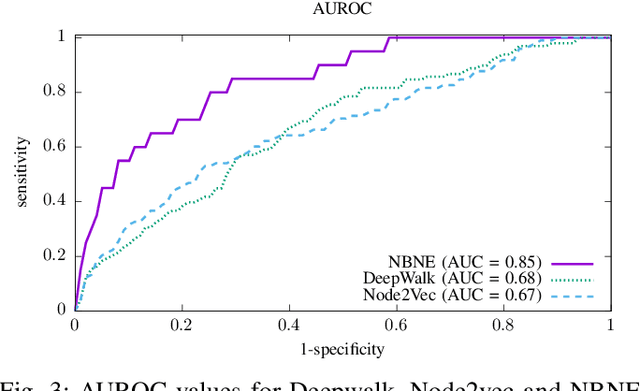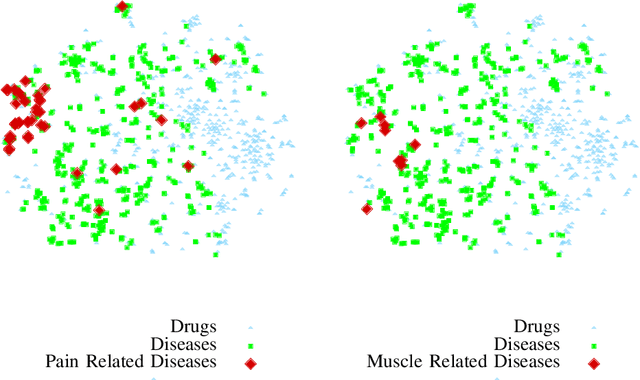Modeling Pharmacological Effects with Multi-Relation Unsupervised Graph Embedding
Paper and Code
May 15, 2020



A pharmacological effect of a drug on cells, organs and systems refers to the specific biochemical interaction produced by a drug substance, which is called its mechanism of action. Drug repositioning (or drug repurposing) is a fundamental problem for the identification of new opportunities for the use of already approved or failed drugs. In this paper, we present a method based on a multi-relation unsupervised graph embedding model that learns latent representations for drugs and diseases so that the distance between these representations reveals repositioning opportunities. Once representations for drugs and diseases are obtained we learn the likelihood of new links (that is, new indications) between drugs and diseases. Known drug indications are used for learning a model that predicts potential indications. Compared with existing unsupervised graph embedding methods our method shows superior prediction performance in terms of area under the ROC curve, and we present examples of repositioning opportunities found on recent biomedical literature that were also predicted by our method.
 Add to Chrome
Add to Chrome Add to Firefox
Add to Firefox Add to Edge
Add to Edge